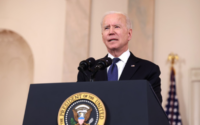Abortion Access Groups Say Roe-Induced Rage Giving Has Declined 2023
Rage faded. After the Supreme Court overturned Roe v. Wade a year ago, abortion access groups got emergency money, but individual and foundation giving has declined.
After the Dobbs decision, some major abortion access funders have ended or shifted funding from organizations working in states where abortion is now banned, said Naa Amissah-Hammond, senior director of grantmaking with Groundswell Fund, which funds grassroots reproductive justice groups.
Women’s health and foster care charities, who predicted increasing demand in abortion-restricted regions, say they haven’t experienced additional funding.
Holly Calvasina, director of development at Memphis reproductive health clinic CHOICES, suggested an answer. Calvasina said she prepared for the surge in demand before the Supreme Court draft was released in May last year, like many reproductive rights workers. Some financiers saw the writing on the wall and increased funding, while others waited.
“I think (that) really speaks to kind of a fundamental issue with philanthropy and responding to emergent crisis,” Calvasina said. “Philanthropy is slow and human rights crises are fast.”
Last year’s $150,000 spring appeal donations demonstrated CHOICES’ giving rollercoaster. Up from $2,000 in 2021. This year’s appeal raised $40,000.

“It is literally people wanting to choose full bodily autonomy.”
Marsha Jones, executive director of Dallas-based The Afiya Center, said organizations in abortion-restricted states have had to change.
After the Dobbs ruling, her group expanded its birthing facility with funds, but she said funders were more concerned in abortion activism and practical help than maternal health. She has long argued that reproductive justice is more than abortion access.
Last year’s philanthropic donations to any sector is scarce. Before COVID-19, IRS donor reports were delayed by up to two years.
According to the Giving USA report released last week, donations to human services and public society benefit organizations, which could include abortion access nonprofits, declined in 2022, while donations to health organizations increased 5%, which is actually a decline when adjusted for inflation.
Abortion financing is very opaque. Many donors finance anonymously, forcing recipients not to divulge the source.
The Susan Thompson Buffett Foundation, the largest historic funder, makes gifts public through tax filings but does not comment on abortion access or how its funding strategy changed after the Dobbs decision.
The David and Lucile Packard Foundation, another prominent backer, said it is relocating or canceling funds to groups in most areas where abortion is outlawed or limited. Last year, the foundation added $14.1 million to “shore up providers in safe haven states” and stated it may finance maternal health in these states instead.
The William and Flora Hewlett Foundation supports grantees in all states to fund abortion treatment or activism against restrictions.
The Women’s Philanthropy Institute at Indiana University’s Lilly Family School of Philanthropy found that fewer than 2% of donations go to women and girls’ groups.



